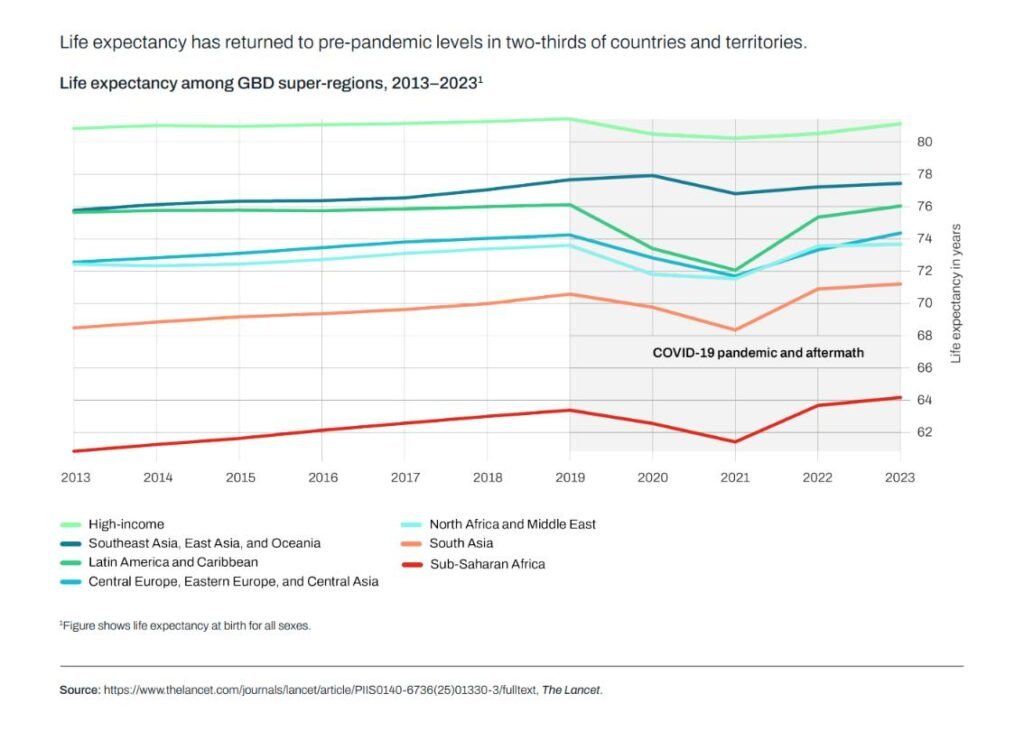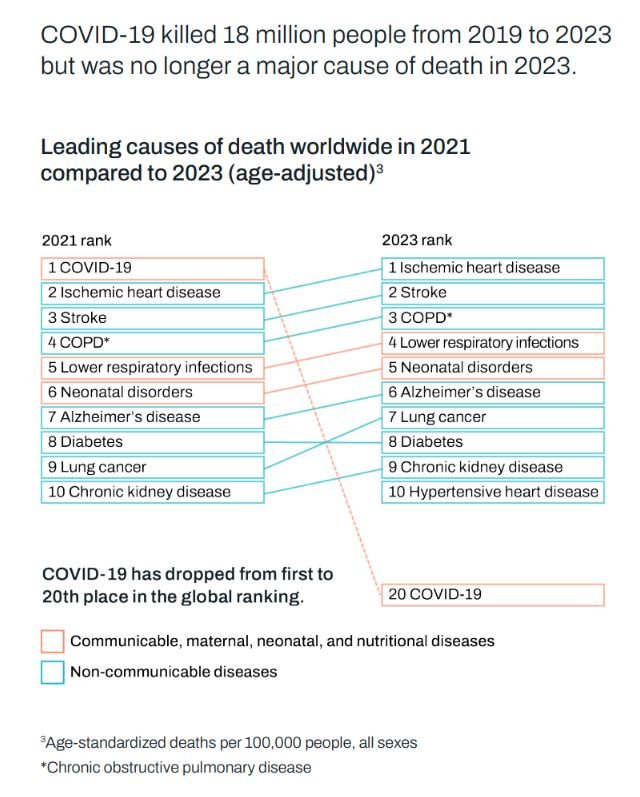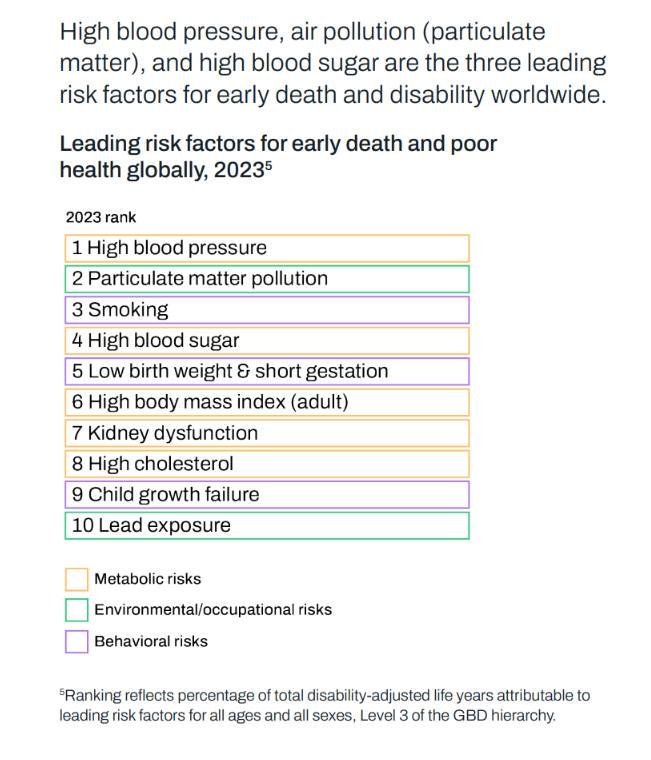Overview
The Institute for Health Metrics and Evaluation (IHME) publishes a new Global Burden of Disease (GBD) study in The Lancet, revealing that while global mortality rates are falling overall, the decline has stalled among youths and young adults.
Highlights
- Half of the world’s disease burden is preventable and driven by 88 modifiable risks, including high blood pressure, air pollution, smoking, and obesity.
- Global mortality rates are falling but not among youths and young adults, according to the latest Global Burden of Disease (GBD) study published in The Lancet today and presented at the World Health Summit in Berlin.
- Non-communicable diseases (NCDs) now account for nearly two-thirds of the world’s total mortality and morbidity, with ischemic heart disease, stroke, and diabetes leading the globe.
- Nearly half of all death and disability could be prevented by modifying some of the leading risk factors, such as reducing high levels of blood sugar and high body mass index (BMI).
Life expectancy (LE)
- LE and mortality have largely returned to pre-COVID levels.
- Mortality among children, adolescents, and young adults has declined in most regions except Eastern Europe and high-income North America.
- New data and methods uncovered higher mortality among women in sub-Saharan Africa than previously reported.

Causes of death
- Causes of death are shifting from infectious to non-communicable diseases, creating new global health challenges, particularly for low-income countries.
- COVID-19, the leading cause of death in 2021, dropped to 20th place in 2023.
- Ischemic heart disease and stroke ranked first and second in 2023, followed by chronic obstructive pulmonary disease, lower respiratory infections, and neonatal disorders.

Risk factors
- Almost half of the global mortality and morbidity in 2023 was attributable to 88 modifiable risk factors.
- The 10 risk factors with the highest proportion of health loss were high systolic blood pressure, particulate matter pollution, smoking, high fasting plasma glucose, low birthweight and short gestation, high body mass index, high low-density lipoprotein cholesterol, kidney dysfunction, child growth failure, and lead exposure.
- Between 2010 and 2023, disability-adjusted life year rates for high body mass index rose by almost 11%, drug use by nearly 9%, and high blood sugar by 6%.

Key takeaways
- Global life expectancy in 2023 is more than 20 years higher compared to 1950, and the age-standardised mortality rate is 67% lower, with all 204 countries and territories reporting declines.
- Despite these improvements, the world faces an emerging crisis of higher death rates in adolescents and young adults in North America and Latin America due to suicide and drug and alcohol consumption and in sub Saharan Africa due to infectious diseases and unintentional injuries.
- Non-communicable diseases account for nearly two-thirds of the world’s total mortality and morbidity, led by ischemic heart disease, stroke, and diabetes, emerging in the top ten causes.
- The burden of mental disorders continues to surge globally, with anxiety and depression increasing death and disability by 63% and 26%, respectively.
Further readings
- IHME: https://www.healthdata.org/news-events/newsroom/news-releases/new-global-burden-disease-study-mortality-declines-youth-deaths
- Global demographic analysis: http://ms.spr.ly/6188s2bOa
- Global causes of death: http://ms.spr.ly/6183s2bOF
- Global burden of diseases, injuries, and risk factors: http://ms.spr.ly/6185s2bON
- GBD 2023 data visualization tools, videos, infographics, and resources are now available: http://ms.spr.ly/6189s2bO7
- Political declaration of the fourth high-level meeting of the General Assembly on the prevention and control of NCDs and the promotion of mental health and well-being
- Kathmandu Declaration: Financing for Universal Health Coverage
- The Belém Health Action Plan for the Adaptation of the Health Sector to Climate Change
- Registration Now Open: Delivering for Nutrition in South Asia 2025 – Towards Impact at Scale!
- World Chronic Obstructive Lung Disease (COPD) Day 2025: Short of Breath, Think COPD!


